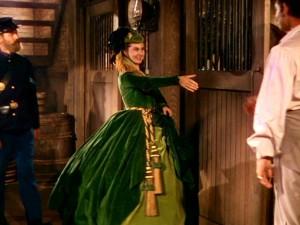9 Reasons You Understand More About Media Preservation Than You Think
October 28, 2013
Plus 1 Bad Joke
Whether you are a trained archivist or not, you probably already understand some of the basic concepts of media preservation even if the technical scope if beyond you. You probably understand more than you allow yourself to think.
1. Metadata
Chances are you or someone you tolerate takes digital photos with a camera or phone, or has an iTunes library. Okay, or a Zune. In the case of the latter, I’m sorry. In the case of the former, do the photos downloaded to your computer look like this, making it impossible to find the photo you want:
And for the power nerds, er, power users out there, have you ever scoffed at how the MP3 of Neil Young’s Harvest and Harvest Moon has embedded the same album cover?! These are simple, apparent metadata points. Metadata is not data about data, but information about an object and how you can find it quickly in a messy file structure and how you can/should use it. Some of this information is highly technical or deeply buried, but you already understand how it helps you correctly identify and use content.
2. Obsolescence
VHS-C. ‘Nuff said.
3. Format Selection
Seinfeld, Season 7, Episode 16, “The Shower Head”
When selecting target format for digitization, there is a balance of quality, sustainability, what will perform the work you need it to perform, and what your organization and systems can reasonably handle. Don’t default to low-flow just because of resource savings and don’t be scared off from doing anything at all by the high-end ideal.
4. Presentation
Ever had the experience where you were looking at one of those digital photo frames and thought, “Boy, I’ve maybe let myself go a little of late, but I didn’t think I was ever that…wide. And I thought my head was fairly average-sized”? Most likely (not in my case because my head does need a massive pillow) those are older photos shot or printed at a smaller aspect ratio (3×5, 4×6) and automatically stretched to fit the 16×9 or similar wide frame. Applying the incorrect aspect ratio to digitized film and video can destroy the image (as well as your ego).
5. Duration
Chances are you listen to albums, watch TV, and/or watch movies.
Chances are you don’t like to waste things you’ve paid for.
If you don’t know the duration of some media content, if it’s a commercial work chances are its close to 30, 60 or 120 minutes, a newsclip may be in the 1-5 minute range, and field recordings or b-roll will fill as much of the tape as possible. These inferred durations will be close enough for planning digitization. Exact run times are not a priority in most catalogs. It can be figured out after digitization, by the digitized file.
6. Degradation
That Tupperware lid that doesn’t fit anymore after being microwaved or run through the dishwasher too many times. The plastic pen clip that snaps after you fidget with it too much in meetings. The patio furniture that discolors in the sun. Those cheap plastic bags at the pharmacy they have to double up (please just make them stronger and only give us one…) so they don’t sag and stretch.
Most physical media is made up of plastics and chemical goop. It decays accordingly.
7. Searchability
“Hey Phil, can you put the game on?”
“Sure thing — what channel?”
“I dunno, it’s somewhere in the 500s or 800s. Just flip through them.”
8. Reformatting
| Darned Socks | Conservation (Restoring the object as faithfully as possible to its original state.) | |
| Knee Patches | Restoration (Restoring the object close to its original state, albeit with certain non-original modifications in an attempt to enhance public consumption.) | |
| Cut-off Shorts | Access Copy (Lower resolution copy of an original that may reflect format or generational loss, or have certain editing decisions applied. Primarily for casual or near term use needs and may be considered disposable.) | |
| Quilt | Reuse (Repurposing or reformation of original content from one or multiple sources to create new content that does not necessarily reflect the essence of the original(s) but establishes its own qualities as a new object for care.) | |
| The Curtain Dress | Preservation (A newly created instance of the original at the highest quality possible with the most faithful reproduction of the original essence possible under reasonable, existing constraints. Is meant to be sufficient quality to replace the decaying original and move things ahead into the future.) |
9. Selection
I prefer Chubby Hubby to Cherry Garcia, so I will eat it first.
This pint of Chubby Hubby has been opened and this one is new. I will finish the open one first.
This pint will need hot fudge. The second pint is probably fine without it.
I can probably finish these two pints tonight, and then next week I can get two more. The Cherry Garcia can wait, or I can serve it to guests.
And 1.
Two archivists walk into a bar. One of them orders a bourbon on the rocks, the other an IPA. They begin to get into an intense discussion. The bartender says, “Hey, what do you guys do?” One of them says, “We’re archivists.” The bartender says, “Huh. What is that exactly?”
— Joshua Ranger

